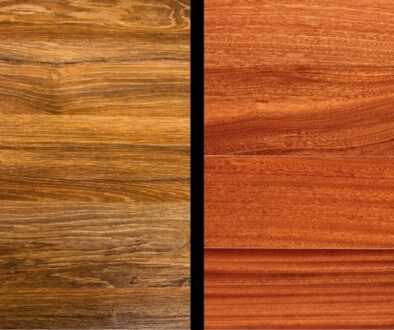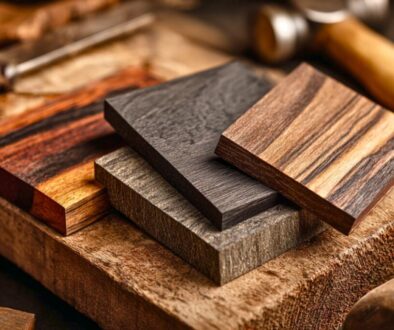Hardest Wood In The World: Unveiling The Strength Behind The Grain
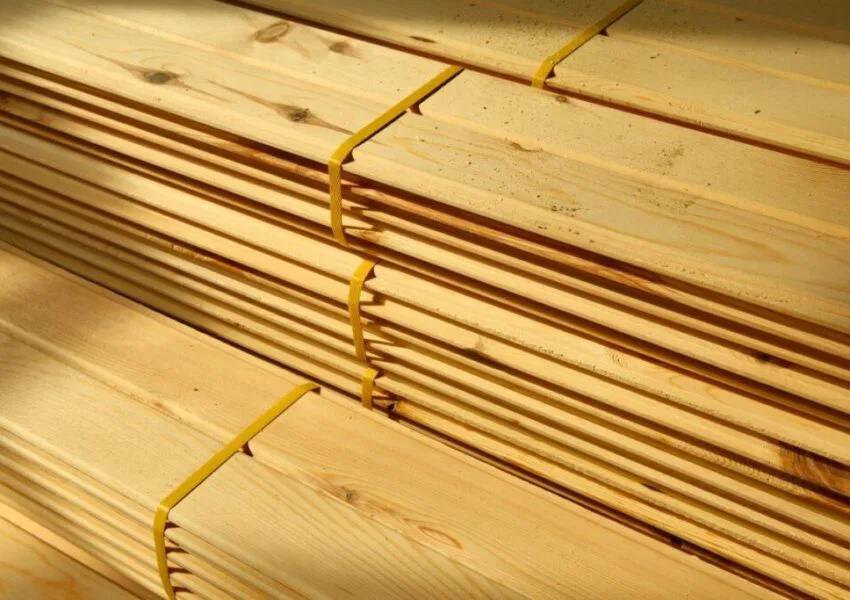
Published May 14, 2025
What’s the hardest wood in the world, and why does it matter? Whether you’re building furniture or crafting flooring, wood hardness matters. It’s also key when choosing materials for heavy-duty construction. Hardness impacts performance. But what exactly sets the hardest wood apart from other tough, durable options? Grasping this concept can help you make better decisions for your next project.
In this article, we’ll explore the world’s hardest woods, the science of measuring their hardness, and why it’s essential to know.
What Determines Wood Hardness?
Wood hardness is vital for durability and wear resistance. The Janka hardness test is the industry standard method for comparing different types of wood. Factors like density, grain structure, and moisture content also play a role. Understanding these helps you choose the right wood for your needs.
The Janka Hardness Test Explained
The Janka hardness test is the industry benchmark for evaluating a wood’s durability and resistance to wear and dents. Here’s how it works: a steel ball, 0.444 inches in diameter, is pressed halfway into a wood sample. The force required to embed the ball to that depth, measured in pounds-force (lbf), determines the wood’s Janka rating.
The Janka test is a standardized method for measuring wood hardness. It’s a reliable benchmark for comparing the strength of different wood types, making it an essential tool in the industry.
Factors Influencing Wood Density And Durability
Several key factors shape wood’s hardness, including its density, grain structure, and moisture content. Woods with tightly packed fibers are typically denser and more durable. External factors like climate, soil quality, and genetics also affect a tree’s hardness, which in turn impacts its longevity.
Properly seasoned hardwoods with low moisture content perform well in Janka hardness tests. Waterlogged wood is softer and less durable. These factors are key when choosing strong, long-lasting wood.
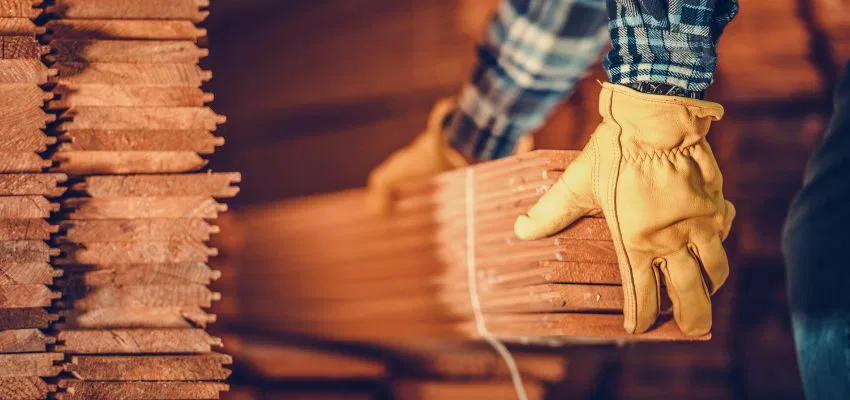
Top Hardest Woods In The World
Not all woods are equally durable or strong. The hardest woods in the world are incredibly dense, ideal for heavy-duty construction and detailed craftsmanship. Here’s a look at the toughest woods, ranked by their Janka hardness ratings.
Australian Buloke (Allocasuarina luehmannii)
Janka Hardness: 5,060 lbf
Australian Buloke is the hardest wood available. It comes from the ironwood tree found in Southern and Eastern Australia. Its high density makes it perfect for durable applications like flooring, construction, and industrial use.
Baraúna (Schinopsis brasiliensis)
Janka Hardness: 4,800 lbf
Native to Brazil and part of the Cashew family, Baraúna is renowned for its remarkable hardness and durability. It’s extremely strong, making it perfect for structural uses. Its natural beauty adds elegance to high-end furniture designs.
Quebracho (Schinopsis balansae)
Janka Hardness: 4,570 lbf
Known in Spanish as the “axe bender,” this incredibly dense wood comes from Argentina and Paraguay. Popular for its exceptional weight and durability, it’s a top choice for heavy-duty industrial applications.
Lignum Vitae/Guayacan (Guaiacum spp.)
Janka Hardness: 4,500 lbf
Lignum Vitae is known for its density and water resistance. It has been a top choice for shipbuilding and machinery bearings. This unique wood comes from South America and the Caribbean. Its natural oils make it incredibly durable and long-lasting.
Gidgee (Acacia cambagei)
Janka Hardness: 4,270 lbf
Gidgee is a true gem of Australia. It’s known for its rich, dark grain patterns and exceptional hardness. Its durability rivals even synthetic materials. Gidgee is often used for decorative furniture and specialty items. It perfectly combines beauty and strength.
Snakewood (Brosimum guianense)
Janka Hardness: 3,800 lbf
Snakewood originates from South America. Its name comes from its unique grain patterns, which look like snakeskin. Known for its density and beauty, it’s often used to make artistic items. Typical uses include instrument inlays and knife handles.
Verawood (Bulnesia arborea)
Janka Hardness: 3,710 lbf
Verawood, or Argentine Lignum Vitae, is a green-toned hardwood. It’s valued for its density and beauty. Known for its ornamental appeal, it’s often used in precision crafting and fine woodworking.
Camelthorn (Vachellia erioloba)
Janka Hardness: 3,680 lbf
Camelthorn grows in the arid landscapes of southern Africa. It’s known for its durability and ability to survive harsh conditions. Its strength makes it ideal for long-lasting fence posts and sturdy furniture.
African Blackwood (Dalbergia melanoxylon)
Janka Hardness: 3,670 lbf
African Blackwood is known for its deep, rich hues. Musical instrument makers highly value it. Its exceptional density improves sound quality, making it perfect for intricate carvings. Its beauty and function make it a prized material.
Grey ironbark (Eucalyptus paniculata)
Janka Hardness: 3,664 lbf
Grey ironbark is a premium Australian hardwood known for its durability and beauty. Its impressive hardness makes it ideal for flooring and decking. Strong yet elegant, it’s perfect for heavy-duty applications.
Katalox (Swartzia cubensis)
Janka Hardness: 3,660 lbf
Katalox, also known as Mexican Royal Ebony, is valued for its dark, rich beauty. It’s also durable and visually striking, perfect for high-end furniture and detailed woodwork.
Black Ironwood (Krugiodendron ferreum)
Janka Hardness: 3,660 lbf
Black Ironwood is native to the Caribbean and Florida. It’s known for its exceptional density and striking grain patterns, and its rarity makes it highly sought after by woodturning enthusiasts.
Curupay (Anadenanthera colubrina)
Janka Hardness: 3,630 lbf
Curupay, also called Patagonian Rosewood, is a dense hardwood from South America. It’s known for its bold, streaked grain patterns. With exceptional durability and striking looks, it’s a favorite for high-end flooring and cabinetry.
Ipe (Handroanthus spp.)
Janka Hardness: 3,510 lbf
Commonly referred to as Brazilian Walnut, Ipe is renowned for its exceptional durability and resistance to water. These qualities make it ideal for outdoor decking and heavy-duty construction projects.
Cumaru (Dipteryx odorata)
Janka Hardness: 3,330 lbf
Also known as Brazilian Teak, Cumaru is prized for its exceptional durability and natural beauty. Its remarkable strength and striking hues make it a top choice for high-end flooring and decking projects.
Additional Noteworthy Mentions
- Leadwood (3,579 lbf): This wood is exceptionally dense, heavy, and prized for small carvings and specialized applications.
- Brown ebony (3,590 lbf): It’s known for its intricate details and luxurious finishes. It’s a top choice for high-end craftsmanship.
These woods are some of the hardest in the world. Each has unique visual appeal and remarkable strength, making it perfect for specialized uses.
Hardest Wood Vs. Most Durable Wood
Understanding Strength, Toughness, And Longevity
Hardness doesn’t always mean durability when it comes to wood. Some hardwoods can be brittle, while others, like Hickory or Oak, balance strength and flexibility. Lignum Vitae, for example, is extremely hard, tough, and water-resistant, making it ideal for marine use.
Some softwoods, like Cedar and Redwood, can outperform hardwoods in certain conditions. They naturally resist decay, insects, and weathering.
Choosing The Right Wood For The Job
The best wood for a project often depends on its intended use. Consider the following:
- Flooring and High-Traffic Areas: Hardwoods like Australian Buloke excel due to their extreme hardness.
- Marine and Outdoor Applications: Water-resistant woods such as Lignum Vitae are the gold standard.
- Tools, Sports Equipment, and Instruments: Woods like African Blackwood are hard and workable, perfect for precision and functionality.
By understanding wood’s unique qualities, you can choose the perfect material for your project.
Applications Of The Hardest Woods
Industrial And Commercial Uses
The hardest woods are highly valued for their exceptional durability and industrial applications. Lignum Vitae is a trusted material for underwater bearings in ships and hydroelectric plants. Its natural resilience makes it highly effective. Quebracho, with its impressive density, is perfect for heavy-duty installations. It offers exceptional strength and longevity.
Furniture, Flooring, And Decorative Uses
In luxury interiors, woods like Snakewood and African Blackwood stand out. They are known for their beauty and durability. High-end flooring uses materials like Katalox and Australian Buloke. These woods are scratch-resistant and visually stunning. They combine practicality with elegance.
Vintage & Specialty Wood offers high-quality, sustainable options for those seeking reclaimed hardwoods with character and strength. These hardwoods are perfect for custom furniture, statement walls, and durable flooring.
Challenges Of Working With Extremely Hard Woods
The extreme hardness of these woods comes with challenges. Their density makes them difficult to process. Specialized tools and carbide-tipped blades are often needed for cutting and shaping. This raises production costs, limiting their use to high-value applications.
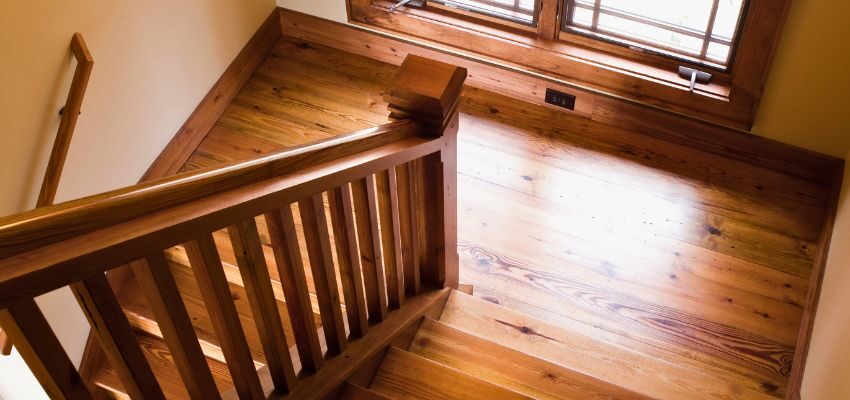
Frequently Asked Questions
How is wood hardness determined?
The Janka hardness test is the standard method for measuring wood hardness. It determines the force to embed a steel ball halfway into the wood’s surface.
Can the hardest woods be used for furniture or flooring?
Yes, but their high cost and complex processing limit their use. They are primarily used in luxury or specialized projects focused on durability and exclusivity.
Are the hardest woods resistant to pests and decay?
Dense woods like Lignum Vitae resist pests and decay naturally. Their high density and natural oils provide protection. Snakewood, however, may need extra treatment for long-term durability, especially outdoors or in uncontrolled environments.
Enduring Beauty: Crafting With The Hardest Woods
The world’s hardest woods highlight nature’s finest craftsmanship. They offer beauty, durability, and versatility. Understanding their qualities helps in making wise choices. These woods are used in industries and artistic designs. Whether you value strength, longevity, or sustainability, the right wood can enhance any project. It blends function with artistry. Valuing these rare materials promotes mindful use and preserves them for the future.
Experience the ideal blend of strength, style, and sustainability with reclaimed hardwoods from Vintage & Specialty Wood—built to last and crafted to inspire.
Hire The Timber Experts For Your Next Project
Vintage & Specialty Wood should be your source of the highest quality timbers from around the world. When it comes to fabricating and installing reclaimed wood or specialty wood products in your home, we don’t cut corners. We offer many reclaimed wood and specialty wood products such as Douglas Fir, white oak, and much more. We also offer timber framing and wood flooring services as well. Contact our team today to speak to a timber expert about what Vintage & Specialty Wood can do for you.

This Blog Is Fact Checked
This content has undergone meticulous fact-checking by our team of internal experts. Gain a deeper understanding of the high editorial standards we uphold on our website here.

About The Author
Experience, exploration, and knowledge are the hallmarks of writer Rei Bayucca. Her dedication to crafting articles that both inspire and educate will leave you thinking long after you’ve finished reading.

